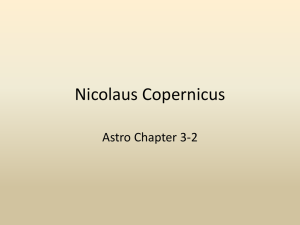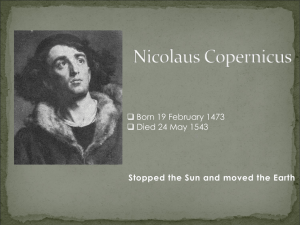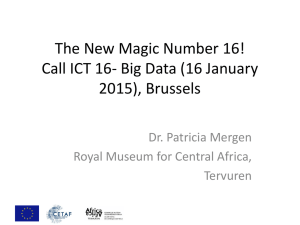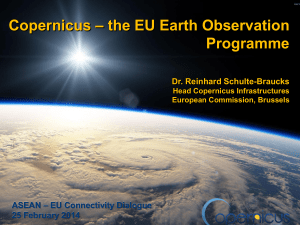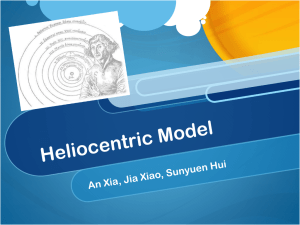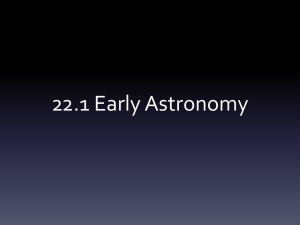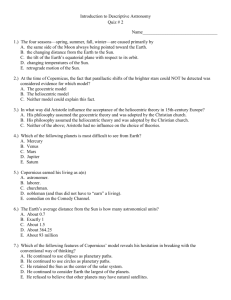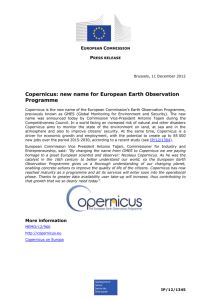Nicolaus Copernicus
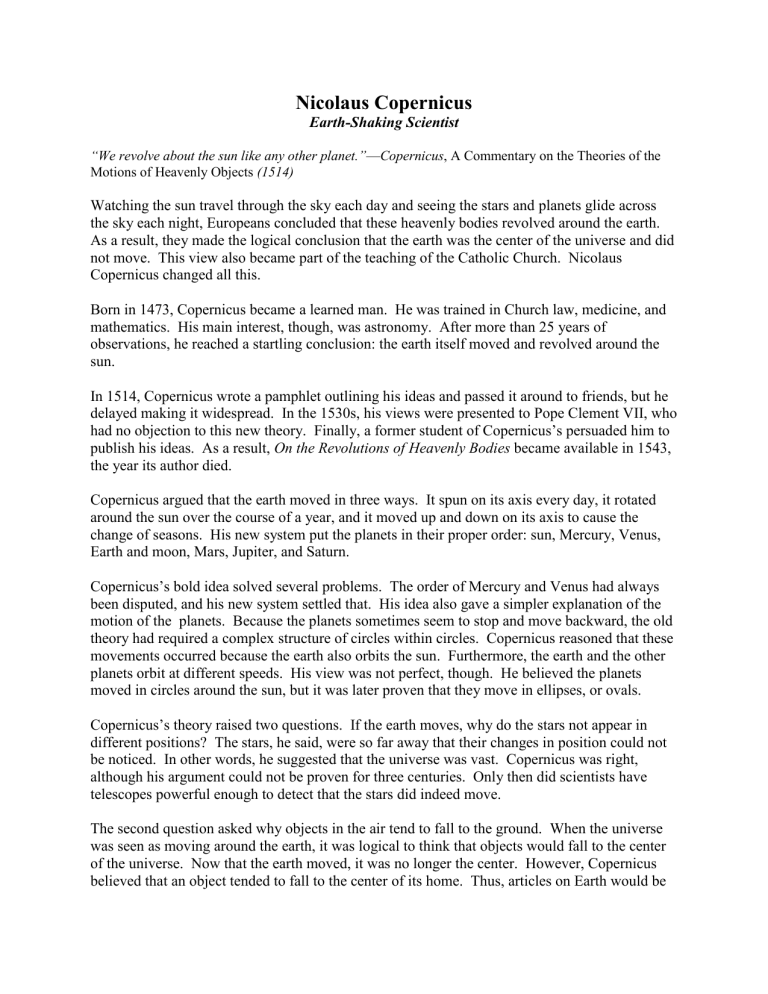
Nicolaus Copernicus
Earth-Shaking Scientist
“We revolve about the sun like any other planet.” —
Copernicus , A Commentary on the Theories of the
Motions of Heavenly Objects (1514)
Watching the sun travel through the sky each day and seeing the stars and planets glide across the sky each night, Europeans concluded that these heavenly bodies revolved around the earth.
As a result, they made the logical conclusion that the earth was the center of the universe and did not move. This view also became part of the teaching of the Catholic Church. Nicolaus
Copernicus changed all this.
Born in 1473, Copernicus became a learned man. He was trained in Church law, medicine, and mathematics. His main interest, though, was astronomy. After more than 25 years of observations, he reached a startling conclusion: the earth itself moved and revolved around the sun.
In 1514, Copernicus wrote a pamphlet outlining his ideas and passed it around to friends, but he delayed making it widespread. In the 1530s, his views were presented to Pope Clement VII, who had no objection to this new theory. Finally, a former student of Copernicus’s persuaded him to publish his ideas. As a result, On the Revolutions of Heavenly Bodies became available in 1543, the year its author died.
Copernicus argued that the earth moved in three ways. It spun on its axis every day, it rotated around the sun over the course of a year, and it moved up and down on its axis to cause the change of seasons. His new system put the planets in their proper order: sun, Mercury, Venus,
Earth and moon, Mars, Jupiter, and Saturn.
Copernicus’s bold idea solved several problems. The order of Mercury and Venus had always been disputed, and his new system settled that. His idea also gave a simpler explanation of the motion of the planets. Because the planets sometimes seem to stop and move backward, the old theory had required a complex structure of circles within circles. Copernicus reasoned that these movements occurred because the earth also orbits the sun. Furthermore, the earth and the other planets orbit at different speeds. His view was not perfect, though. He believed the planets moved in circles around the sun, but it was later proven that they move in ellipses, or ovals.
Copernicus’s theory raised two questions. If the earth moves, why do the stars not appear in different positions? The stars, he said, were so far away that their changes in position could not be noticed. In other words, he suggested that the universe was vast. Copernicus was right, although his argument could not be proven for three centuries. Only then did scientists have telescopes powerful enough to detect that the stars did indeed move.
The second question asked why objects in the air tend to fall to the ground. When the universe was seen as moving around the earth, it was logical to think that objects would fall to the center of the universe. Now that the earth moved, it was no longer the center. However, Copernicus believed that an object tended to fall to the center of its home. Thus, articles on Earth would be
pulled to Earth, and those on the moon would be pulled to the moon. He suggested the basics of gravity about 100 years before Isaac Newton.
Copernicus’s views did not cause much of a stir at first. Although his idea challenged Catholic teaching about the universe, the church did not object to the new theory. However, Martin
Luther and John Calvin, leaders of the Reformation, both objected strongly. Calvin asked, “Who will venture to place the authority of Copernicus above that of the Holy Spirit?” Over time, though, Catholics objected as well. By 1616, the Church officially called his idea false. The work of later astronomers, however, showed that Copernicus drew an accurate picture of the solar system.
Questions
1.
Recognizing Facts and Details . According to Copernicus, what were the ways in which the earth moved?
2.
Making Inferences
. Since Copernicus’s theory was not perfect and could not explain all observations of the heavens, why did some people accept it?
3.
Identifying Supporting Ideas . How did Copernicus use the idea of bodies tending toward different centers to support his theory?


